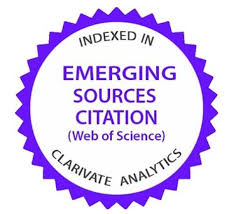A European Res publica
Palabras clave:
Constitutional theory, EU-constitution, Sovereignty, Republican Theory, Res PublicaResumen
The article analyses the fundamental constitutional enigma of the European Union (EU), namely whether the EU can be considered as a (from its Member States) separate and independent constitutional legal order. The EU is often referred to as a legal order sui generis, i.e. of a unique character that defies traditional definitions. More specifically, the notion of an independent and separate EU is at odds with the idea of the sovereign state. The notion of the EU as a legal order sui generis is too much influenced by the models of the sovereign state and sovereignty (in the vein of Thomas Hobbes). The key component in the Hobbesian idea of sovereignty is freedom as non-interference. A sovereign state is consequently a state that is free from, i.e. not interfered with by, external actors like, for example, the EU. Put differently, either the EU is sovereign or the Member States are sovereign.
By shifting the perspective to a neo-Roman republican understanding of freedom as non-domination the constitutional picture of the EU will become more nuanced. Res publica is best understood as what citizens hold in common and above their narrow self-interest. According to a republican notion of the constitution the purpose of the law is to eliminate the possibility of arbitrary domination. For that reason, not all interference is to be considered as a restriction of freedom but only those restrictions that cannot be justified according to the res publica. Viewed through the republican prism it can be argued that the EU represents an important advancement in securing freedom as non-domination without implying that the EU must become a state. The fundamental enigma can thus be rephrased as a clash between two diverging concepts of freedom. Whereas the EU will always be at odds with the idea of sovereignty (however framed) it will be much easier to reconcile with the republican ideal.
DOWNLOAD THIS PAPER FROM SSRN: http://ssrn.com/abstract=1837332
Descargas
Estadísticas globales ℹ️
|
186
Visualizaciones
|
207
Descargas
|
|
393
Total
|
|
Descargas
Publicado
Cómo citar
Número
Sección
Licencia
Los autores conservan el copyright de sus trabajos, que se publicarán en OSLS bajo una licencia Creative Commons Reconocimiento NoComercial SinObraDerivada. Puede consultar más detalles en: http://es.creativecommons.org/licencia/. Si no está de acuerdo con esta licencia, por favor, póngase en contacto con nosotros.
El autor concede los permisos necesarios para difundir la información bibliográfica del artículo, incluyendo el resumen, y autorizar a otros, incluyendo las bases de datos bibliográficas, de índices y servicios de alerta de contenidos, a copiar y comunicar esta información.
Para más información sobre los permisos para distribuir su artículo en cada fase de la producción, por favor, lea nuestra Política de Autoarchivo y Divulgación (en inglés).
Las condiciones de copyright con el nombre de autores y co-autores, y la licencia Creative Commons se mostrarán en el artículo. Estas condiciones se deben aceptar como parte del proceso de envío de un artículo a la revista. Por favor, asegúrese de que todos los co-autores se mencionan correctamente, y que entienden y aceptan estos términos.


















